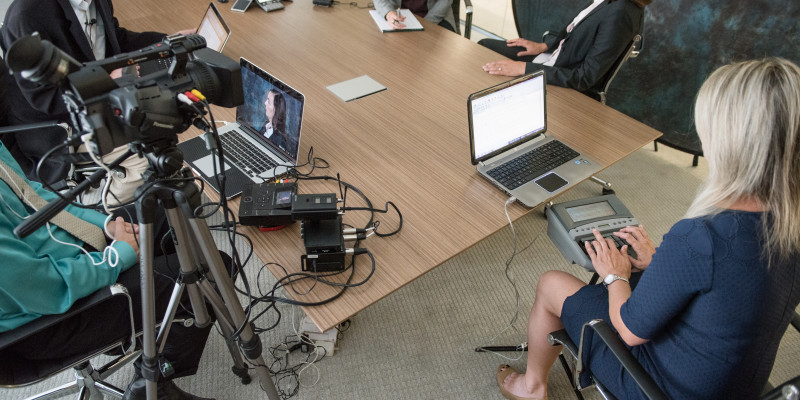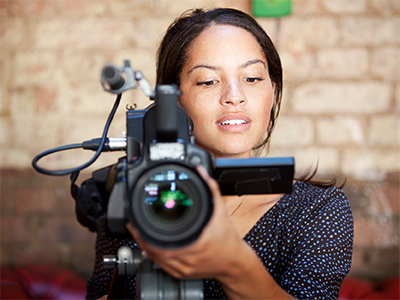The Function of Legal Videography in Modern Legal Procedures
The Function of Legal Videography in Modern Legal Procedures
Blog Article
Exploring the Vigor of Lawful Videography: a Comprehensive Understanding Into Its Capability in Maintaining Accurate Visual Records for Legal Instances
Lawful videography stands as a critical part in the world of legal proceedings, working as a quiet yet effective observer in the quest of justice. The usage of video clip innovation in recording legal situations surpasses mere record-keeping; it encapsulates the extremely significance of occasions, feelings, and testimonies that unfold within courts. By diligently capturing visual proof, lawful videography not only preserves the accuracy of these moments but additionally supplies a deeper understanding of the details included. As we look into the performance and significance of lawful videography in the context of legal situations, a profound understanding dawns upon the important duty it plays in shaping the training course of justice.
Importance of Lawful Videography
Highlighting the pivotal function of lawful videography in modern-day legal procedures, its value lies in its capability to provide irrefutable visual evidence that boosts the discussion of truths and testimonies. By catching real-time events, depositions, and witness testimonies in a video layout, lawful videography guarantees that every nuance, expression, and information is accurately protected for later evaluation. This aesthetic documents functions as a powerful tool in courtrooms, allowing judges and jurors to better comprehend the context of a situation and make notified choices based upon the provided proof.
Additionally, lawful videography contributes to boosted transparency and responsibility in the lawful system. In essence, the significance of lawful videography exists in its capability to promote the stability of the legal procedure by capturing and preserving accurate aesthetic documents that sustain the search of justice.
Capability in Lawful Documents
Lawful videography's duty in modern-day legal procedures expands beyond providing visual proof; its functionality in legal documents is necessary for properly protecting the details of occasions and testimonies. Via the precise recording of depositions, court room procedures, witness testaments, and criminal offense scene examinations, lawful videography makes sure an unfiltered account of occasions that can be reviewed and assessed during the lawful procedure. This accurate documents serves as a vital resource for courts, juries, and attorneys to reference particular moments, body movement, face expressions, and nuances that may not be completely recorded in written records alone.
Additionally, lawful videography plays an essential role in preserving the honesty of lawful process by minimizing the risk of misconception or control of info. The aesthetic records captured via lawful videography provide an impartial depiction of the truths offered throughout an instance, supplying a extensive and reputable source of proof that can significantly impact the outcome of legal disputes (Legal Videography). Essentially, the functionality of legal videography in lawful documents offers as a keystone in promoting openness, precision, and fairness within the legal system
Significance in Visual Evidence Conservation
Maintaining aesthetic proof with precise recording techniques is a vital element of legal videography. The relevance of aesthetic proof preservation can not be overstated in legal process. Aesthetic evidence, such as videos of crime mishaps, scenes, or testimonies, can offer important insight into occasions that words alone might not fully capture. By precisely documenting these visuals, legal videographers play an important duty in making sure the honesty and authenticity of evidence presented in court.
Aesthetic evidence preservation additionally assists in protecting against misconceptions or misinterpretations that can occur from written or verbal testimonies. The capability to see and hear events as they occurred can dramatically impact the end result of an instance. Moreover, visual evidence can function as an effective device for both the prosecution and defense in presenting their disagreements persuasively.
Role in Ensuring Justice
In the quest of fair and just legal outcomes, the duty of lawful videography is essential. Legal videography plays a crucial function in guaranteeing justice by offering honest and accurate aesthetic evidence that can dramatically impact the result of legal cases. Unlike composed records or testimonies, video recordings catch the subtleties of body movement, faces, and tone of voice, using an extensive representation of events as they unravel. This aesthetic proof is particularly important in court rooms, where it can aid prove or test witness testaments, strengthen debates, and ultimately add to the establishment of reality and fairness.
Additionally, legal videography serves as a way of preserving turning points and information that might be missed or misinterpreted in created transcripts (Legal Videography). By documenting scenes, activities, and interactions in real-time, lawful videography assists avoid visit this page misstatements and makes sure that all celebrations involved have accessibility to the same details, promoting openness and responsibility in the legal procedure. Ultimately, the usage of legal videography not just enhances the performance of legal process however additionally supports the concepts of justice and equity in the legal system
Essential Tool for Legal Instances

Final Thought
In conclusion, lawful videography plays a critical duty in protecting accurate aesthetic documents for legal cases. Its value depends on its functionality in lawful documents, significance in visual evidence conservation, and duty in ensuring justice. As a crucial device for lawful cases, lawful videography works as an important resource for offering visual proof and adding to check this site out the overall honesty of the legal procedure.
Legal videography's duty in contemporary lawful procedures extends past providing aesthetic evidence; its performance in lawful documentation is essential for properly preserving the information of statements and events. In significance, the functionality of legal videography in lawful documentation offers as a cornerstone in maintaining transparency, accuracy, and justness within the legal system.
Eventually, the usage of legal videography not just boosts the effectiveness of lawful proceedings however additionally supports the concepts of justice and equity in the lawful system.

As a crucial tool for lawful cases, lawful videography serves as a beneficial source for presenting aesthetic evidence and contributing to the overall stability of the legal procedure.
Report this page